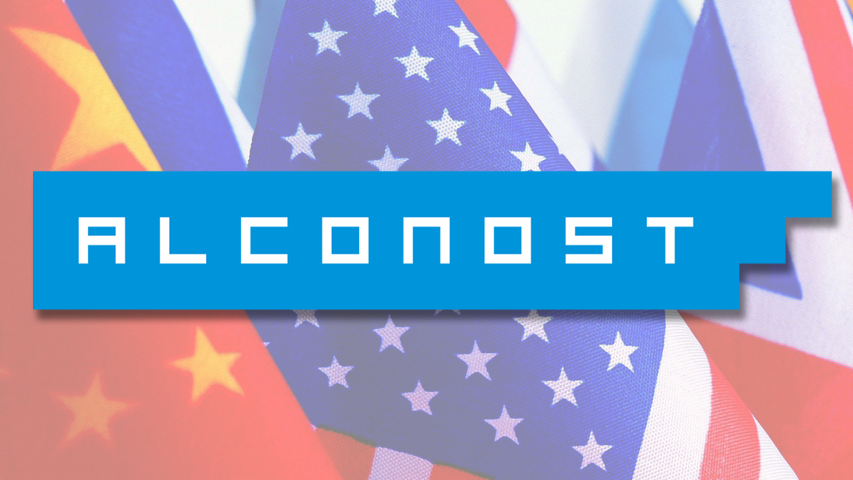The language in the interface: pay for a short-long one!
Alconost Translations shared with App2Top.ru the way, on average, the volume of text in gaming products varies depending on the language into which they are translated. The buden material is very useful for those who do not want to redraw the size of the buttons in the game for each region.
At Alconost Translations, we noticed that developers localizing their product often face such a problem: the new language version does not fit well into the existing interface. Simply put, the buttons are too short for English text, and too long for Chinese text. The reason for this is the volume difference between the texts in the original language and in the localization language.
The same text takes up different volumes depending on the language, and this is a well-known fact. But what is this difference in numerical terms for certain language pairs?
We turned out to have enough "live" empirical material and we conducted a small study, the results of which we want to present. Our research is applied in nature; we hope it will "lay the straw" for developers and help them create the correct interface for software products.
Longer than in English
When translated from English to French or Spanish, the text becomes 20.3% longer on average. Localization from English to Italian or German increases the volume of text by an average of 17.3%. In Dutch, the text will take up 13.8% more space than in English.
If necessary, make a translation from English to Portuguese, it should be noted that localization to "Portuguese Portuguese" will increase the text volume by 14.3%, and to "Brazilian Portuguese" — by slightly less than 13%.
Translating an English—language product into Polish or Russian will increase the volume of the text by an average of 9.2%. Curiously, the Czech language is the closest in terms of volume to the English original (it will take only 3.7% more space).
Shorter than in English
Obviously, hieroglyphic writing prevails in this section. Translation from English into traditional Chinese will reduce the volume of text by 63.8%, and into simplified Chinese by almost 62%. Localization into Korean will reduce the volume of string resources by a little more than 44%, and into Japanese — by almost 40%.
Not much, but still shorter than in English, you will get the text in Arabic: we save 6.25% of the volume.
It is worth noting that hieroglyphs or Arabic letters will not be easy enough to read if you type them in small size. Therefore, despite the reduction in the volume of texts, you should take care of a large enough font to display them.
Longer than in Russian
Curiously, the translation from Russian to English does not significantly affect the length of the text: it increases in volume by slightly less than 1.4%. Russian Russian translation into Italian, Spanish or French already requires additional space: on average, by 13.5%. (In parentheses, we note that the translation from Italian to Russian increases the volume of the text slightly — by less than 3.6%.)
The French translation is leading the rating "longer than in Russian": the text becomes a little more voluminous by more than 16%.
How did we calculate this?
This study is based on data from the live online translator Nitro. The most popular language pairs were selected for the study (from which language and into which language) and one thousand orders were analyzed for each of the translation directions. For each of the orders, the ratio of the volume of text in the target language (into which we translate) to the volume of text in the source language (from which we translate) was calculated. After sorting the results, we calculated the average value.
What follows from this?
After analyzing the results, we came to at least three interesting conclusions.
Firstly, after translating the text from English to German, its volume does not grow by 30% at all (this is exactly the figure that can be found, in particular, in the Microsoft documentation for software developers), but by 16.67%. And this is good news for developers, because it makes it easier to interfere with the interface in order to optimize for the German version.
Secondly, a significant reduction in the volume of text after translation from English to Chinese is a "red light" for developers of applications and games for mobile platforms, in particular for iOS. Developers are working very painstakingly on the interfaces of mobile applications, and so that the UI does not lose its elegance in the Chinese version of the product, they will have to try twice as hard.
Thirdly, a pattern is obvious: when translating back (from the target language — back to the source language), the volume of the new version will not necessarily correspond to the volume of the original. Russian Russian localization adds 9.1% in volume, but the translation of the Russian version back into English does not reduce the volume of the text by the same 9.1%. On the contrary: the volume is increasing again, albeit insignificantly — a little less than 1.4%.
About the company: Alconost Translations is a Russian company engaged in the translation and localization of software, games and much more. It was founded in 2006.
About the service: the data provided in the article was collected by the company using its own professional translation service into foreign languages Nitro.
